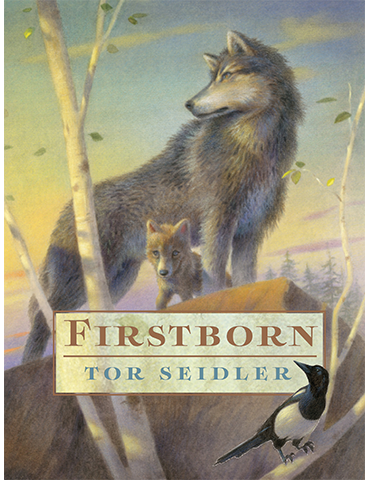
Synopsis
When Blue Boy, the most respected wolf in Yellowstone, meets his son for the first time, he is overjoyed. His first born! But that joy shifts to increasing disappointment when Lamar seems as interested in chasing beetles as in chasing elk, or when he worries about his siblings falling behind in a hunt instead of leading the pack--definitely not alpha behavior. Even more unseemly, Lamar is entranced by, of all creatures, a coyote. Lamar doesn't understand what makes wolves and coyotes so different from one another, what makes their friendship so . . . taboo. But when his troubled thoughts prompt him to leave the pack, a usurper rises from within its ranks to challenge the injured Blue Boy, and Lamar finds himself torn between what is expected of him and what his heart yearns for. It seems no matter what he decides to do, he's going to let someone down--his father, the coyote, the entire pack, or himself . . . .
Purchase
Reviews
-
. . . Seidler’s tale, narrated by the precocious Maggie and filled with her droll observations, brims with rivalries and treachery as well as selfless acts and unrequited love. A rich tale of the wild that quickens the pulse and fills the heart.- Kirkus
-
. . . Seidler has done superb research on animal behavior, which is clearly evident throughout the entirety of the novel. A great addition to any upper elementary or middle school collection, this is ideal for opening conversation with young students regarding racial prejudice and societal stereotypes.- School Library Journal
-
The designation “firstborn” applies to several characters in Seidler’s animal adventure—the effervescent narrator, Maggie the magpie; Blue Boy, a wolf who accepts Maggie as an unofficial pack member; and Lamar, Blue Boy’s eldest son, who wrestles with familial duties and his unorthodox love for a coyote. After Maggie realizes that she is different from other magpies (“the thought of spending my whole life with Dan and his junk made me shudder”), she takes off to explore the wilderness of Montana and Wyoming just as wolves are being reintroduced to Yellowstone Park. National Book Award finalist Seidler illuminates a world full of beauty (“leaves had broken out of their buds, like butterflies out of their cocoons”), danger, and the struggle to survive: deaths come fast and frequent for predators and prey alike. Themes of self-acceptance, devotion, and integrity resonate as Maggie and others act on wisdom she learns from her first friend, Jackson the crow: “you can’t be loyal to others if you’re not loyal to your own nature first.” A moving acknowledgement of true friendship provides a heartwarming conclusion to this absorbing tale.- Publishers Weekly (starred review)
-
Told in the voice of Maggie, a flippant-yet-wise magpie, the story takes off when she discovers parenting her own flock is not for her. Instead, she is attracted to the freedom of Blue Boy, the alpha male of a small pack of wolves living near Yellowstone. The novel chronicles the pack’s adventures: bringing down buffalo, raising a litter, avoiding capture (or killing) by humans. The anthropomorphized characters are
fully developed, with part of the story centered around Lamar, Blue Boy’s firstborn, who is not an alpha-in-training, but instead prefers cavorting among flowers and pursuing a female coyote. Themes such as survival of the fittest, protection of the environment, and appreciation of those who are different abound. Seidler, writing in a style reminiscent of that of Jean Craighead George yet uniquely his own, paints word pictures of the majestic scenery.- Booklist
-
In The Wainscott Weasel, Tor Seidler masterfully used interspecies romance to explore an animal community on the South Fork of Long Island, N.Y. Now, in Firstborn, the author applies his talents to an interspecies friendship in Yellowstone National Park, where wolves have just been re-introduced.
Narrator Maggie is a magpie born with curiosity and wanderlust. She shudders at her unoriginal name and pines to see what's outside of her nest at the Triple Bar T ranch in Montana. Jackson the crow serves as teacher for Maggie's hungry mind. He tells her about their surroundings and explains "only winged creatures have souls." She confides in him her dissatisfaction with staying in the nest with her mate, who fills it so full of "bric-a-brac" there's hardly room for their eggs. Jackson tells her, "If I've learned anything over the years, it's this: you can't be loyal to others if you're not loyal to your own nature first."
Maggie soon sets out to see the wider world, throwing in her lot with a wolf recently captured in Canada and released in nearby Yellowstone. The wolf saved Maggie from a fox, and she decides to guide him back to his family. Called Blue Boy for his blue-black coat, he and Maggie become hunting companions--Maggie spies the prey and Blue Boy brings it down. Adventure soon follows. A human shoots a bullet that hits Blue Boy's tracking collar (courtesy of Yellowstone), releasing it, but the bullet lodges in his neck. Three wolves answer Blue Boy's plaintive howl; instead of killing him, they help him heal. The four--plus Maggie--form a pack.
Seidler grants his magpie narrator the power of speech and the ability to understand all species. Still, Maggie remains true to her nature--except for the abandonment of her mate. Her aberration sets the stage for Blue Boy's son, Lamar, the firstborn in his litter, to manifest errant behavior such as empathy and a curiosity that sometimes distracts him from the hunt. Young readers will readily identify with both Maggie and Lamar, especially as they experience the wonders of Yellowstone. In early spring, Maggie notes, "Leaves had broken out of their buds, like butterflies out of their cocoons." The author describes the parents' fierce protection of the wolf pups as well as the power struggles within the pack.
Seidler lays out the tradeoffs of interrupting nature's flow without ever taking sides. Maggie's unusual perspective allows readers' affections for the wolves to grow along with hers, as she earns her revered place in the pack. --Jennifer M. Brown, children's editor, Shelf Awareness
Shelf Talker: The author of The Wainscott Weasel once again deftly explores an interspecies relationship, this time with the dazzling setting of Yellowstone National Park.- Shelf Awareness (starred review)
-
Firstborn by Tor Seidler; Atheneum Books for Young Readers, 227 pages ($16.99). Ages 9 to 14.
Tor Seidler offers a vivid tale of life among a wolfpack in “Firstborn,” the latest addition to his marvelous pantheon of animal novels for young readers. (Seidler was a National Book Award finalist for 1997 novel “Mean Margaret,” a hilarious tale of woodchucks who become the reluctant caretakers of a nasty human toddler, and “Gully’s Travels,” a thrilling adventure of a pampered Lhasa apso, illustrated by Buffalo artist Brock Cole.) “Firstborn” is narrated by a magpie named Maggie who develops a mutually beneficial friendship with Blue Boy, a wolf who has been shot with a tranquilizer dart in Canada and moved to an enclosure in Yellowstone National Park in a project to reintroduce wolves to the park. Frantic to return to his mate and pups in Canada, Blue Boy escapes from the enclosure and finds his way with Maggie’s help. Seidler’s novels offer rich characters and this one offers gripping action, tragedy and suspense. The interactions in the pack hierarchy add to the drama, with the noble Blue Boy, the scheming Raze, firstborn Lamar with a mind of his own, loyal Alberta, wise Frick, devious Lupa. The novel is rich with vivid bird’s-eye descriptions of the landscape. (“The western sky was the color of a ripe peach. In the east a nearly full moon was on the rise. The vast space in between was a deep mysterious blue.”) Maggie’s narration is sometimes poetic: “Life without wings must be a bitter thing.” At her original home, the Triple Bar T ranch in Montana, she muses about her mate: “I got the queasy feeling that he fit the ‘thieving hoarder’ profile....I was stuck in the nest night and day with all his bric-a-brac.” And so skillful is Seidler in developing his characters, that the end may bring some readers to tears.
– Jean Westmoore
- The Buffalo News
-
‘Firstborn,’ by Tor Seidler
By LENORA TODARO
May 8, 2015
“The glint of wolves’ eyes in the night is a chilling sight. If I’d been wingless, I would have been terrified.” That’s Maggie, the lively magpie who narrates Tor Seidler’s artful and affecting new novel, “Firstborn.” As it turns out, those eyes belong to wolves who, improbably, become her family. Together, led by the fearless Blue Boy, wolves and bird journey to the remote Lamar Valley in Yellowstone National Park where, they hear, an abundance of food awaits them. In the valley — where gray wolves were reintroduced 20 years ago, nearly a century after hunters drastically reduced their numbers — they will birth pups, raise and lose progeny, challenge other wolf packs and re-examine their loyalties to themselves and one another.
Seidler is a masterly teller of tales about society’s foibles — the kind that feature humanized animals, in the tradition of Richard Adams’s “Watership Down,” or Roald Dahl’s “Fantastic Mr. Fox.” It’s an approach that gives young readers emotional distance to reflect on difficult life choices or scary events. In novels like “The Wainscott Weasel” and “Mean Margaret,” a National Book Award finalist, Seidler’s animal characters are nonconformists who speak and feel and love across species, and whose antennas for loss are keener than most. In “Firstborn,” Seidler adds a nod to environmental stewardship, slyly showing that even the most well-meaning program to relocate animal species is complicated: The wolves’ population grows, a national park is reinvigorated, but a generation is torn from its families — and ranchers gripe that the creatures will turn their cattle into prey.
Maggie narrates the novel from her airy perch above “the poor earthbound creatures.” The eldest bird-child in her brood — a firstborn — she seeks an original life, and laments her common name: “Here I was, a minute-old magpie, with a mother named Mag and a father named Max, and they were calling me Maggie!” She finds the adventure she aches for when she crosses paths with Blue Boy, a wolf who had been collared and penned in Yellowstone as part of the wolf reintroduction plan and then escaped by digging his way to freedom. Maggie follows Blue Boy, scouting prey for him. Together, they pick up a new family of wolves: Alberta, the flirtatious, maternal alpha female; Lupa, the petty underling female; and Frick, the second male, whose knowledge of medicinal herbs saves them more than once.
Seidler has a crafty way of making the reader feel like one of the pack: When the wolves issue a howl “so soul-stirring that I swear the moon quivered in the sky,” you want to join them. But this is a pack whose main characters also want to follow their own paths, a social situation that will resonate with young readers. “The thing is, it’s hard to be different and the same at once,” a crow says to Maggie early on. These firstborns shake off eldest-child responsibilities, but not without paying a price.
Maggie abandons her own mate to follow Blue Boy; when he dug his way out of the Yellowstone wolf pen, Blue Boy abandoned his brother, whom he must face later in the story; and Lamar, a firstborn pup of one of Blue Boy and Alberta’s litters, leaves the pack to romance a coyote, a subversive act since “wolves and coyotes don’t mix.” The strain upon Blue Boy and Lamar’s relationship nearly tears the pack apart. Their quest for survival breeds suspense, but the moral terrain they travel concerns being true to oneself and reckoning with family.
“Firstborn” is dedicated to Jean Craighead George (1919-2012), the great naturalist writer for young readers who Seidler says introduced him to Yellowstone’s wolf life. George’s magnificent “Julie of the Wolves,” the 1973 Newbery Medal winner, tracks an Eskimo girl lost in the Alaskan tundra who survives by mimicking the ways of a wolf. But where George developed human characters who use their knowledge of nature alongside the animals they love, Seidler creates animal characters who have humanlike consciences. And where George made the Alaskan tundra as tangible as her Julie, Seidler uses Yellowstone’s sulfurous hot springs and bubbling caldrons mainly as a stage for the action. He’s a storyteller first, not a naturalist, and at times “Firstborn” strains under the weight of homage.
But Seidler’s storytelling instincts prevail, and he inspires swells of empathy toward the wolves, while keeping real the violence that is a part of their nature. I know the story of these wolves and their magpie pal worked on me. Driving one day not long after I read the book, I had to pull over when I saw two squirrels sniffing the body of a third, who had been killed by a car. As Seidler’s wolves mourn and feel loss when pups are killed by fire, ice, and owl, so too here were creatures grieving for a lost companion, or so I was convinced.
227 pp. Atheneum. $16.99. (Middle grade; ages 8 to 12)
Lenora Todaro has written about books for The Times, Bookforum, Salon and The Village Voice.- The New York Times Book Review
-
Firstborn
By Tor Seidler (Atheneum Books for Young Readers) Ages 9-14
This beguiling nature novel is also a tribute. Tor Seidler, a celebrated writer of juvenile fiction, had a friend and mentor in Newbery Medalist Jean Craigshead George, an exemplar of naturalist story writing from the generation before.
And it was she who intrepidly guided him through Yellowstone Park, which reaches into Wyoming, Montana and Idaho, and the diverse human settlements staked around there, to captivate him with some of the wildest and most intimidating creatures it holds: the giant wolves reintroduced to the park in 1995. As the novel lets on, such people as “red hats” (hunters), farmers, ranchers and park visitors fool-heartedly picnicking where they don’t belong resent this new element, and had a lot to do with its earlier disappearance. Blam! On the other side is a mix of distrust and disdain.
Seidler crafts appearances so he doesn’t seem to be recounting the tale, but neither do the wolves—predominantly the fearless pack at the top of the hierarchy led by the Alpha male Blue Boy. It’s Maggie, the first firstborn of the book, a chatty, curious, adventure-craving magpie who also has a worm to pick with her parents, largely over her boring name indicative of their general worldview.
Resentment and restlessness only blow up in such situations, and when a mate dashes all hope—“the thought of spending my whole life with Dan and his junk made me shudder,” and there’s also the burden of children—the call of the unfamiliar must be followed.
For Maggie, it’s not just discovering the wonders of Yellowstone (unerringly observed from a magpie’s eye view) and the existence of wolves. By proving herself a courageous scout, a wound-healer, a voice of reason, a connoisseur of human habits, she is officially inducted into the pack. As such she is witness to perpetual violence, death, instinctive and distinctive modes of killing, prey hunting prey, the wonder of wolves giving birth (they don’t hatch eggs), shifting alliances trumped by loyalty, the scars and decline of old age, and the spine-tingling, tender love affairs between the pack’s males and females. It’s as good as any soap opera.
Comedy overcomes tragedy for a good while when Lamar, the “firstborn” wolf pup of the title, is born. He has no interest in learning the ways of wolves, but rather the whos and whats of everything around him, his questions always posed in similes for the unknown things he sees before him. As his playful wanderings become more and more dangerous, and irritating to his father, he even courts a grave sin when he falls in love with a sworn enemy and food source for the pack.
Trials are always bound to come before triumphs, or, better yet, acceptance and understanding. Tor Seidler’s natural world is brutal. But his imagination asserts changes in it that speak hopefully to human behavior, and truth to power in his animal kingdom.
- See more at: http://centerforfiction.org/for-readers/kids/junior-edition-new-books-for-younger-readers-23/#sthash.Tf11E9vz.dpuf- Center for Fiction
-
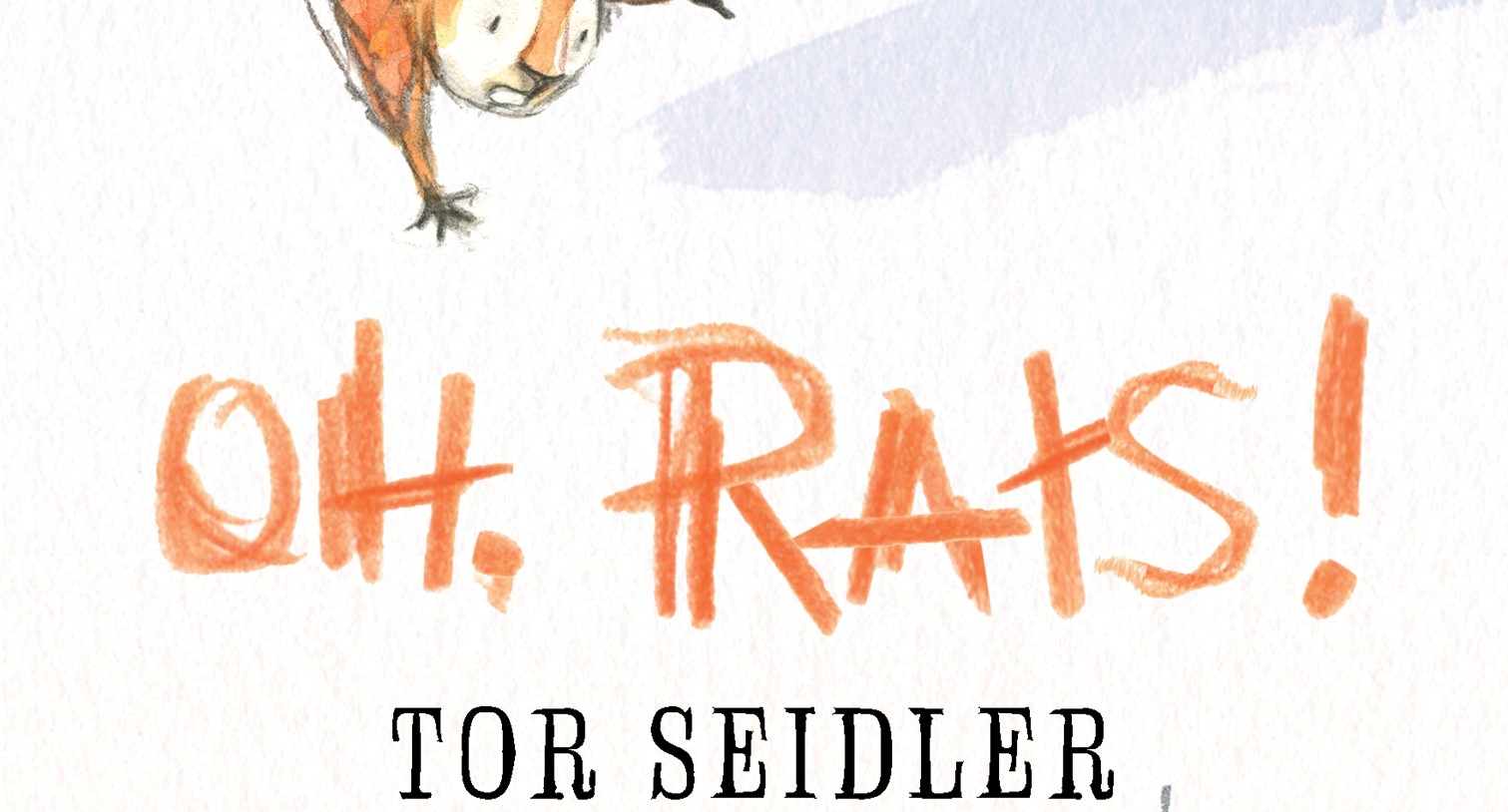 Oh, Rats!Phoenix is a pretty big deal in his neck of the woods: The biggest in his litter with the most…
Oh, Rats!Phoenix is a pretty big deal in his neck of the woods: The biggest in his litter with the most… -
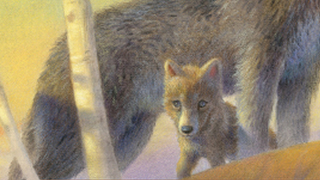 FirstbornWhen Blue Boy, the most respected wolf in Yellowstone, meets his son for the first time, he is overjoyed. His…
FirstbornWhen Blue Boy, the most respected wolf in Yellowstone, meets his son for the first time, he is overjoyed. His… -
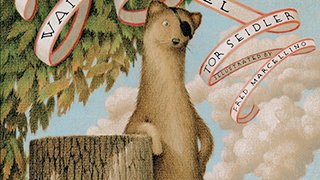 The Wainscott WeaselFish, foxes, farmers, and frogs, seagulls, sparrows, and swans, turtles and terns—the ponds and fields and woods of Wainscott are…
The Wainscott WeaselFish, foxes, farmers, and frogs, seagulls, sparrows, and swans, turtles and terns—the ponds and fields and woods of Wainscott are… -
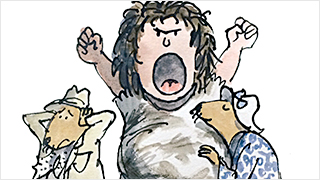 Mean MargaretQuestion: What do a pair of newlywed woodchucks, a squirrel, a testy snake, a skunk, and a couple of bats…
Mean MargaretQuestion: What do a pair of newlywed woodchucks, a squirrel, a testy snake, a skunk, and a couple of bats… -
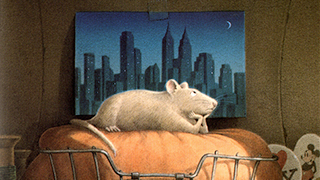 A Rat's TaleMontague Mad-Rat lives a solitary existence in the sewers of New York City. His only pleasures are scavenging in Central…
A Rat's TaleMontague Mad-Rat lives a solitary existence in the sewers of New York City. His only pleasures are scavenging in Central… -
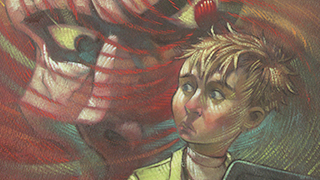 Brainboy and the DeathmasterDarryl Kirby is an orphan. He’s also a whiz at computer games. But when Darryl plays a new version of…
Brainboy and the DeathmasterDarryl Kirby is an orphan. He’s also a whiz at computer games. But when Darryl plays a new version of… -
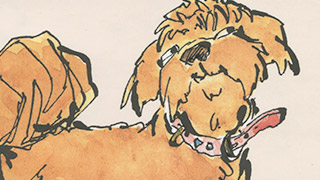 Gully’s TravelsGulliver is a Lhasa apso who leads the cushiest life imaginable. He has a fashionable Manhattan address, eats premium dog…
Gully’s TravelsGulliver is a Lhasa apso who leads the cushiest life imaginable. He has a fashionable Manhattan address, eats premium dog… -
 ToesWhen a litter of cats is born into the McDonahue family, one kitten stands out from the rest. Intelligent and…
ToesWhen a litter of cats is born into the McDonahue family, one kitten stands out from the rest. Intelligent and… -
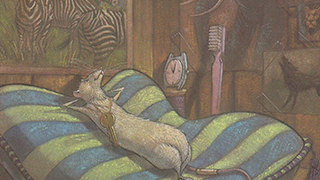 The Revenge of Randall Reese-RatRandal Reese-Rat is mad with jealousy, believing Montague Mad-Rat has stolen Isabel, his former bride-to-be. His feelings are no secret…
The Revenge of Randall Reese-RatRandal Reese-Rat is mad with jealousy, believing Montague Mad-Rat has stolen Isabel, his former bride-to-be. His feelings are no secret… -
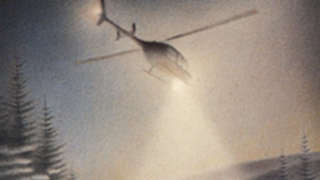 Brothers Below ZeroTim can’t hold a candle to John Henry—not in school, sports, or anything. And John Henry is Tim’s younger brother.…
Brothers Below ZeroTim can’t hold a candle to John Henry—not in school, sports, or anything. And John Henry is Tim’s younger brother.… -
 The Silent SpillbillsKaterina Farnsworth loves rowing with her father in wetlands off Farnsworth Bay, catching glimpses of the local shorebirds. Their favorite…
The Silent SpillbillsKaterina Farnsworth loves rowing with her father in wetlands off Farnsworth Bay, catching glimpses of the local shorebirds. Their favorite… -
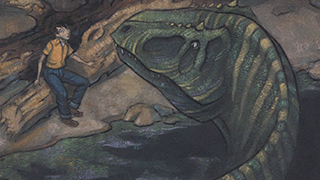 The Tar PitEdward Small might not be very good at schoolwork or at baseball or be very popular, but he was a…
The Tar PitEdward Small might not be very good at schoolwork or at baseball or be very popular, but he was a… -
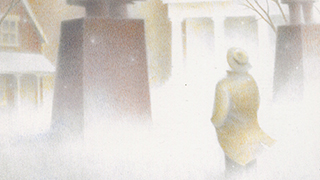 TerpinTerpin Taft is happy to tell people what they want to hear, even it means stretching the truth a bit.…
TerpinTerpin Taft is happy to tell people what they want to hear, even it means stretching the truth a bit.… -
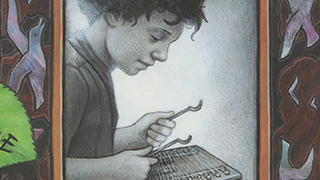 The Dulcimer BoyA weathered stranger delivers an old wicker chest to the Carbuncles’ doorstep. In it they find two sleeping baby boys…
The Dulcimer BoyA weathered stranger delivers an old wicker chest to the Carbuncles’ doorstep. In it they find two sleeping baby boys…